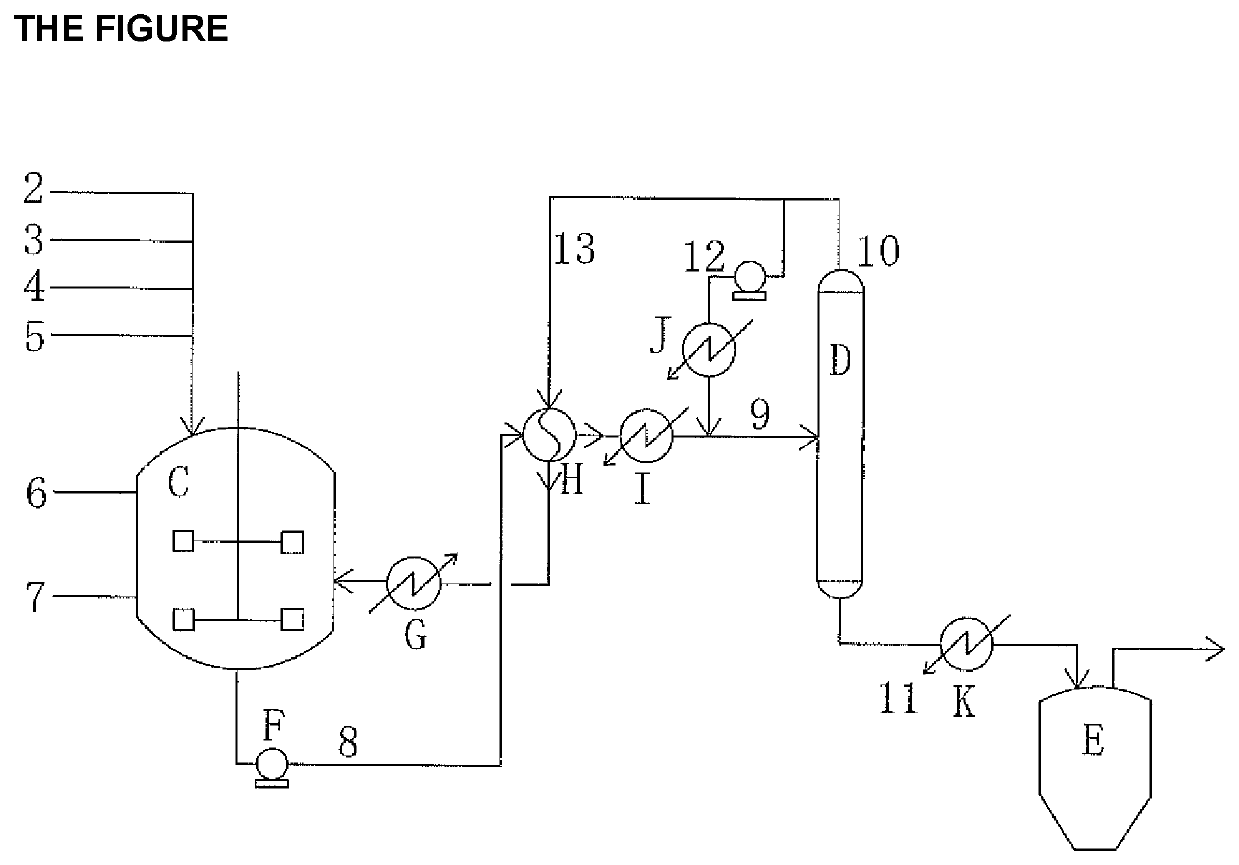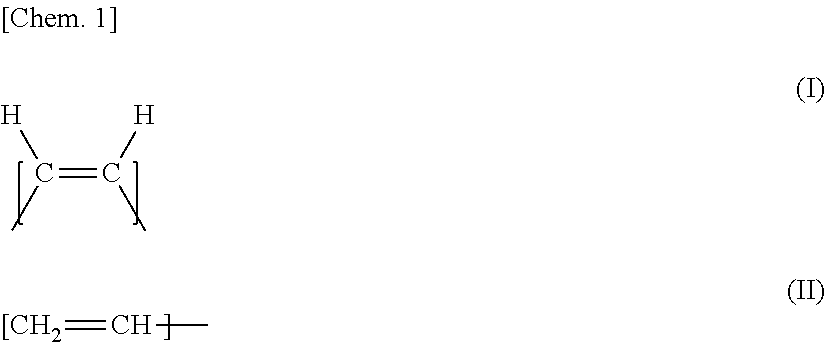ETHYLENE/alpha-OLEFIN/NON-CONJUGATED POLYENE COPOLYMER, METHOD FOR PRODUCING THE SAME, AND USE THEREOF
a technology of ethylene-based copolymers and non-conjugated polyenes, which is applied in the direction of transportation and packaging, tyre parts, special tyres, etc., can solve the problems of reduced processability or physical properties of ethylene-based copolymers obtained by using these techniques, and the molded article obtained by using thereof does not have enough heat aging resistance, etc., to achieve excellent crosslinking characteristics, cure characteristics, and processability
- Summary
- Abstract
- Description
- Claims
- Application Information
AI Technical Summary
Benefits of technology
Problems solved by technology
Method used
Image
Examples
example 1
[0616]Using the continuous polymerization apparatus shown in FIG. 1, an ethylene / propylene / VNB copolymer was produced as follows.
[0617]Into a polymerization reactor C with a volume of 300 liters, 58.3 L / hr of a dehydrated and a purified hexane solvent was continuously fed from a tube 6, and 4.5 mmol / hr of triisobutylaluminum (TiBA), 0.150 mmol / hr of (C6H5)3CB (C6F5)4, and 0.030 mmol / hr of di(p-tolyl)methylene(cyclopentadienyl)(octamethyloctahydrodibenzofluorenyl)zirconium dichloride were continuously fed from a tube 7. Simultaneously, into the polymerization reactor C, 6.6 kg / hr of ethylene, 9.3 kg / hr of propylene, 18 liters / hr of hydrogen, and 340 g / hr of VNB were continuously fed from tubes 2, 3, 4, and 5, respectively, and copolymerization was carried out under the conditions of a polymerization temperature of 87° C., the total pressure of 1.6 MPaG, and a residence time of 1.0 hour.
[0618]The solution of the ethylene / propylene / VNB copolymer produced in the polymerization reactor C...
examples 2 to 4
[0630]The ethylene / propylene / VNB copolymer was produced in the same manner as in Example 1 except that the production conditions of the ethylene / propylene / VNB copolymer were changed to the conditions shown in Table 1. The production results are shown in Table 1. Physical properties of the resulting ethylene / propylene / VNB copolymer were evaluated in the same manner as in Example 1. The results are shown in Table 2. The molecular weight distribution of the resulting ethylene / propylene / VNB copolymer exhibited bimodality.
PUM
| Property | Measurement | Unit |
|---|---|---|
| weight fractions | aaaaa | aaaaa |
| weight fractions | aaaaa | aaaaa |
| specific surface area | aaaaa | aaaaa |
Abstract
Description
Claims
Application Information
 Login to View More
Login to View More - R&D
- Intellectual Property
- Life Sciences
- Materials
- Tech Scout
- Unparalleled Data Quality
- Higher Quality Content
- 60% Fewer Hallucinations
Browse by: Latest US Patents, China's latest patents, Technical Efficacy Thesaurus, Application Domain, Technology Topic, Popular Technical Reports.
© 2025 PatSnap. All rights reserved.Legal|Privacy policy|Modern Slavery Act Transparency Statement|Sitemap|About US| Contact US: help@patsnap.com



